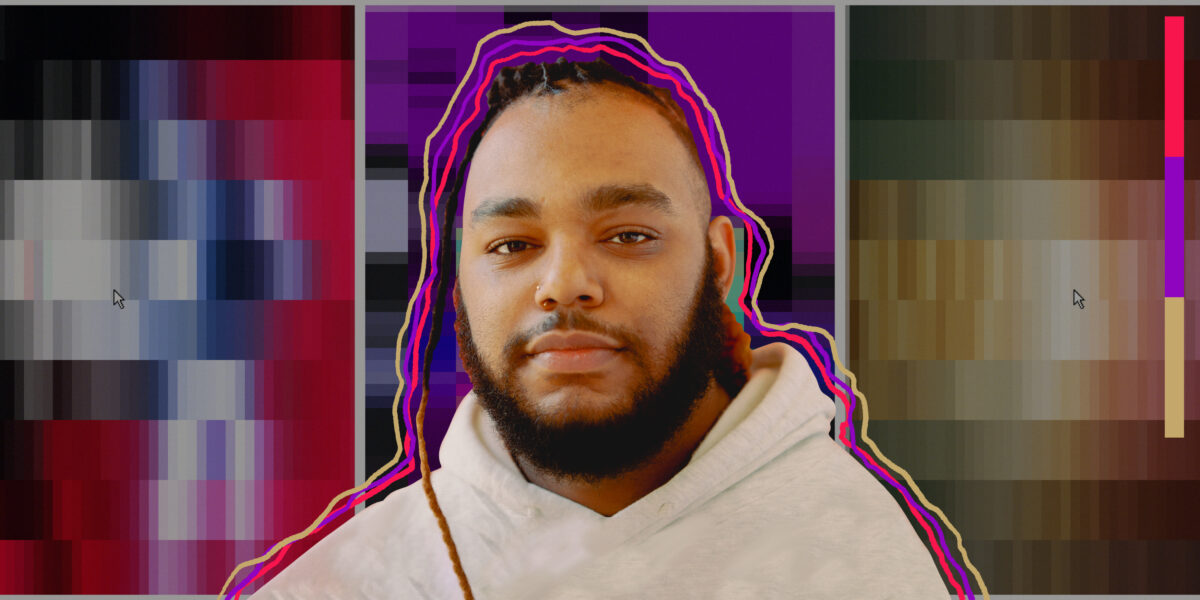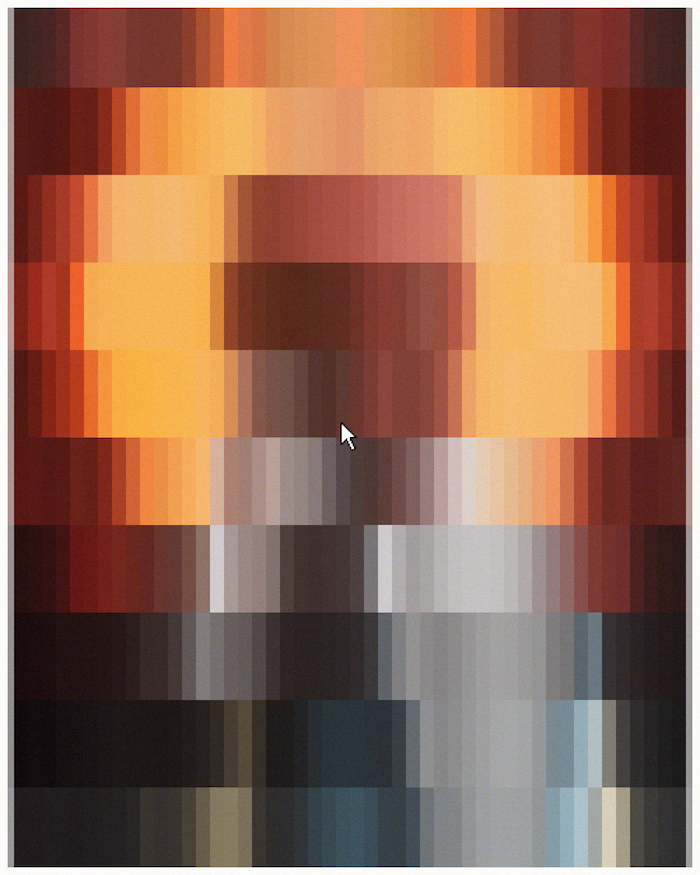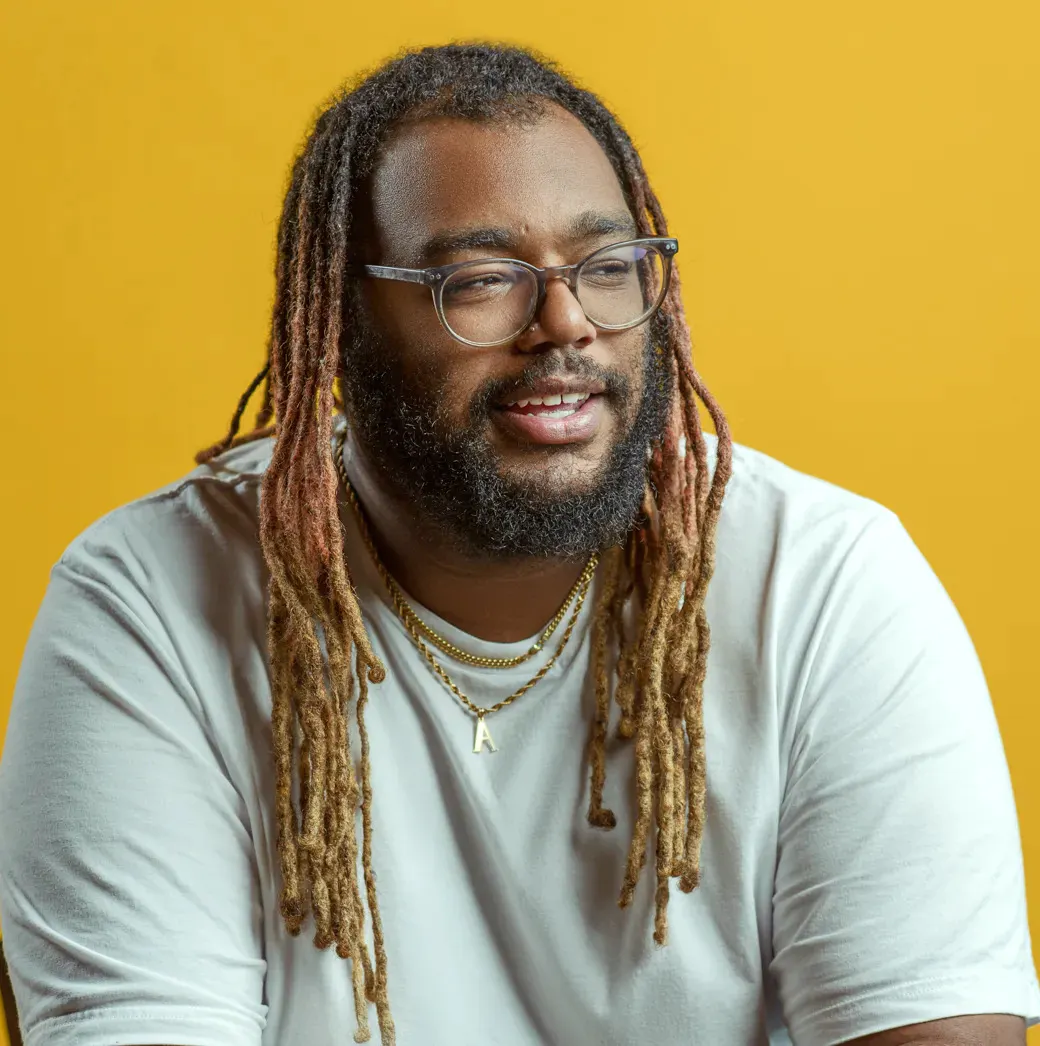Andre Oshea believes “We don’t give each other our best selves” in Web3
In an environment too often populated with big egos, cliques and reactionary drama, Andre Oshea is a much-needed dose of humility and thoughtfulness in the Web3 world. The 3D artist, animator and musician has made a name for himself in the ecosystem through NFT drop partnerships with the Academy Awards, Netflix and the Grammys. But before carving a path in the crypto-art sphere, Oshea earned through client work with companies and figures such as Snapchat, John Legend, Adult Swim, VogueTidal and more.
Oshea’s style contains clear echoes of his personality; his works are often vivid, but never overbearing, and full of contrasts of light and color that are accompanied by a deceptive energy. Often imbued with a kind of retro-futurism, Oshea’s work is at once a balm for the soul and a stimulant for the mind – not an easy tone to strike.

The artist also has a mind to give back to society. Last year, Oshea teamed up with crypto artist and musician Heno to release a 111-piece NFT compilation that donated 50 percent of the proceeds to the Restorative Justice Initiative, an organization fighting the trend of mass incarceration in the United States.
After releasing Index Grids, an abstract NFT collection of pixelated grids whose appearance evolves over four phases as they move between wallets, Oshea is excited about the way the Web3 community is engaging with a project he explicitly designed to provide a new window into the dynamics of the NFT market.
We caught up with the Christie’s-selling artist at his home in Atlanta to talk about Index Grids, the insights he’s gleaned from a declining NFT art market, and the role and controversies of artificial intelligence in the creative sphere.
nft now: Congratulations on selling out of Index Grids; it looks like collectors are already playing with the interactive element of the collection. How has it been to see this project develop so far, and is it different or similar to what you expected when you created it?
Oshea: It’s different than I expected, and that’s because I feel like it exceeded my expectations. The general energy around the droplet [and] its interactivity is very cool for me to see. I have never taken a drop that has been so dynamic. Just seeing how it activates a community has been really cool. [A collector] sent me his Index Grid to send back to him [to see it change].

It was a cool gesture. There is an ongoing collaboration between artists and collectors, but also realize that this can be a collaboration between collector and collector. I was hoping people could turn it on secondary or something. But people transfer it to the burner wallets and back and ask Discord servers whether to transfer it or not.
“The art I love is not always the same art I post.”
Other Oshea
nft now: This is your first purely abstract NFT release in contrast to the more representational or figure-based work you do. What made you want to do something a little more conceptual?
Oshea: It started with some personal reflection, thinking about what kind of artwork I personally appreciate and realizing that the art I love is not always the same art I post. Not that I don’t love my own artwork, I do. But in researching my history as an artist, I became a career artist via freelance work, and in many ways you have to create tangible artwork to freelance.
It resulted in much of my work becoming tangible; the topics can be related. But in the background I usually work on very conceptual and abstract works. I think it was a very conscious shift to lean more into these conceptual ideas that we have and come up with in moments of reflection. Especially for Index Grids was the reflection in the relationship between the art, the artist and the art market.
Everyone right now is a little more insightful and sensitive to the ebb and flow of the market. It was just something I felt was important to comment on. Many artists instinctively feel this relationship and have negative feelings about it. But I think that’s a flawed perspective because it’s only one side of things. The other side is that the art market can give you the opportunity to make a living from your art. And the art market needs art to survive. And I think it’s a really cool opportunity to collaborate between those moments.
“I think that’s what we get from the artist and the art market – I don’t think we give each other our best.”
Other Oshea
nft now: Do you feel there is a little too much cynicism about art NFT these days? It is telling that you released a highly conceptual project at a time when the state of the NFT market is struggling.
Oshea: This is difficult because I believe that the relationship at its core has been the same. But it’s going through a difficult update, isn’t it? And in any kind of relationship, when people go through tough times, they’re usually not the best versions of themselves. I think that’s what we get from the artist and the art market – I don’t think we give each other our best.
Artists feel shortchanged by the market because the market is down, and the market is going to have a hard time coming up if artists are reluctant to release art. I feel quite honestly [Index Cards] came to mind at a very organic time. Everything has a way of adapting as it should. I feel the timing has been very divine.
nft now: If the solution for artists is to keep creating and not be worn down by tough market conditions, what is the solution for collectors? What kind of responsibility do collectors have in such situations?
Oshea: I would say to continue collecting art. Now I understand that it is more difficult, there is less disposable income to collect art, but I think it also comes in the form of support in different ways. For me, the other value I want from my collector base is for them to champion the project, to talk about it and make memes about it.
“You don’t necessarily have to own a piece for 20 years to maintain its value.”
Other Oshea
I have this idea about the secondary market that you need to price parts to sell or they won’t do it and then the project doesn’t look as successful in the end. So collectors must also be good partners and not overprice the work. And maybe don’t be afraid to let go a bit, because that’s kind of what drives this market.
I will not [encourage] quick turnarounds, but it’s an opportunity for you to have a more free-flowing relationship with your art. You don’t necessarily need to own a chip for 20 years to maintain its value.
Andre O’Shea creates art for people who want to escape reality and build the future pic.twitter.com/P8vGvjzAe5
— andreoshea.eth | AI Animator (@andreoshea) 9 March 2021
nft now: AI art tools have proliferated in recent months, and in some ways you represent what may be, at least for now, a rare breed of sorts. Many existing artists reject the tools outright, claiming an ethical high ground, while people who have never created anything before flock to them. However, you have fully embraced them. How has that transition looked from your side as a creative?
Oshea: I’ve been really excited about AI. Since last summer when Midjourney started rolling out. For me, it was a very similar transition that I went through when I discovered 3D. The ideas I had before all felt limitless now. You are pulled in two directions. One, you feel this sense of limitlessness, and you feel so excited about the work you could create.
“I’m just trying to explore this limitless feeling. I try to explore the depths of my imagination. I’m trying to tap into the collective consciousness of humanity.”
Andre Oshea on the creative empowerment of AI
On the other end, I was nervous that people would say, ‘Wait, why are you using AI? Your artwork is too good for you to use AI,’ or: ‘You are too much of an artist to use AI tools.’ I’m just trying to explore this limitless feeling. I try to explore the depths of my imagination. I’m trying to tap into the collective consciousness of humanity.
When you start using [these tools], you realize that it requires genuine skill, in the same way that it requires drawing, painting or 3D animation. And you realize that it has artistic merit in itself, and then you can’t be mad anymore. So I decided to go all in and the results have been amazing.
I think the added value of AI is that this is the collective consciousness of humanity. It’s a way to harness that in a way that we’ve never been able to before. I think the internet represents a collective consciousness because we can see everyone’s thoughts. But with AI, in theory, you generate from everyone’s thoughts, right? AI models are built up from images from around the world. If 75 percent of the images of dogs are golden retrievers, the collective consciousness associates golden retrievers with “dog.”

Now, it doesn’t always do that. But I believe that it gives an insight into what humanity has documented throughout history. I find it very curious. That is the first layer of the value addition for me. The second layer was: ‘How does this collective consciousness transcribe intangible concepts?’ How do we break these concepts down?
nft now: How are these AI tools starting to seep into your artistic process? How do you integrate them into what you do and what you want to do in the future?
Oshea: They are almost like a special effects team. When I create, like AI animations, I usually create a layer one, baseline 3D animation, and then the AI animation is layer two. And I let the AI have some control; I’m just giving it some rough parameters.
When it starts spitting out images, I iterate on top of them. And then, if I need to, I might have to go back and edit the original 3D animation. I use it as a supplement to the original animation for things I don’t know how to do or don’t have time to make.
“I’m sympathetic to people who feel they’ve spent a decade learning how to paint watercolor, and AI can do it in 10 minutes.”
Other Oshea
nft now: If you look at comments under AI art posts on Instagram or Twitter, you’ll often see people enthusiastically expressing their love for a work, but then that enthusiasm recedes after learning that it was created with the help of AI, almost trying to make an attempt to dislike something they clearly like. What is at the heart of this dynamic, in your opinion?
Oshea: When I see it happen, I think it’s someone trying to preserve the time and effort they put into learning their craft. And I sympathize with people who feel they spent a decade learning how to paint watercolor and AI can do it in 10 minutes.
It’s kind of offensive to see all your efforts seemingly being undervalued because someone else can replicate it. However, I think the response is going to change because people will realize that they don’t have to spend a decade learning their craft. And if they do, it’s because they really love it.
I am a 3D animator; I am not a writer. I’m not a novelist. I’m not a screenwriter. It’s not in my wheelhouse. However, I really appreciate things like movies. I appreciate things like comics a lot, just for their artistic value. And I might have the motivation to make a comic, but I don’t know how to write comics. I don’t know how to write character dialogue. But that doesn’t make the pursuit of that dream any less valid.
I think when people realize where AI can take the art that they’ve spent a decade learning, all those perceived barriers will come down because they’ll start to realize that this is really cool. This is really powerful. I can do things I never imagined.


